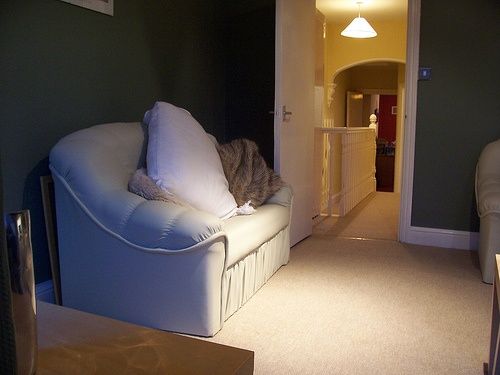使用FCN做图像语义分割(实践篇)
FCN原理
原理我已经在上篇博客说过,大家可以参考FCN原理篇
代码
FCN有官方的代码,具体地址是FCN官方代码
不过我用的不是这个代码,我用的是别人修改官方的版本的代码,使用Chainer框架实现的,Chainer的源码链接:
Chainer框架源码,如果大家使用过Keras的话,应该对它不会感到特别的陌生,Chainer: a neural network framework
好了,我使用的代码是FCN的Chainer implementation, 具体地址是FCN Chainer implementation
安装
安装很简单,直接pip或者源码安装都可以,但是我在我的机器上装过几次,发现使用pip的方式最后fcn.data_dir这个变量的值会指向到你系统的python下的dist-packages这个目录,但是这个目录需要root权限,所以不推荐使用pip直接安装的方式; 关于此问题的说明见:
fcn.data_dir的问题
所以我最后使用的是源码安装的方式,这里推荐使用virtualenv工具建立虚拟环境,实践中发现这是最不会出错的方式,推荐使用!
clone代码
git clone https://github.com/wkentaro/fcn.git –recursive
使用virtualenv安装
sudo pip install virtualenv #安装virtualenv
创建虚拟目录
virtualenv test-fcn
cd test-fcn
激活虚拟环境
source ./bin/activate
克隆fcn代码
git clone https://github.com/wkentaro/fcn.git –recursive
cd fcn
安装fcn
python setup.py develop
demo
下载VOC2012数据集,放入fcn-data-pascal-VOC2012路径下
1. 转换caffe model为Chainer model
./scripts/caffe_to_chainermodel.py
2. load model,进行分割
./scripts/fcn_forward.py –img-files data/pascal/VOC2012/JPEGImages/2007_000129.jpg
训练自己的数据
这个前后搞了快一个月,才把最终的训练搞定,其中艰辛很多,在这里写出来供大家参考
准备自己的数据集
数据集做成VOC2012的segementClass的样子,下图是示例,上面一张是原图,下面一张是分割图
但是每一种label指定的物体都有对应的具体的颜色,这个我们犯了很多错,最后跟踪代码找出来的,具体的每一类的RGB值如下:
| Index | RGB值 |
|---|---|
| 0 | (0,0,0) |
| 1 | (0,128,0) |
| 2 | (128,128,0) |
| 3 | (0,0,128) |
| 4 | (128,0,128) |
| 5 | (0,128,128) |
| 6 | (128,128,128) |
| 7 | (64,0,0) |
| 8 | (192,0,0) |
| 9 | (62,128,0) |
| 10 | (192,128,0 |
这里只列出10类的值,更多类的可以看下面这段代码:
def bitget(byteval, idx):
return ((byteval & (1 << idx)) != 0)
def labelcolormap(N=256):
cmap = np.zeros((N, 3)) #N是类别数目
for i in xrange(0, N):
id = i
r, g, b = 0, 0, 0
for j in xrange(0, 8):
r = np.bitwise_or(r, (bitget(id, 0) << 7-j))
g = np.bitwise_or(g, (bitget(id, 1) << 7-j))
b = np.bitwise_or(b, (bitget(id, 2) << 7-j))
id = (id >> 3)
cmap[i, 0] = r
cmap[i, 1] = g
cmap[i, 2] = b
cmap = cmap.astype(np.float32) / 255 #获得Cmap的RGB值
return cmap
def _label_rgb_to_32sc1(self, label_rgb):
assert label_rgb.dtype == np.uint8
label = np.zeros(label_rgb.shape[:2], dtype=np.int32)
label.fill(-1)
cmap = fcn.util.labelcolormap(len(self.target_names))
cmap = (cmap * 255).astype(np.uint8) #转换为整数值
for l, rgb in enumerate(cmap):
mask = np.all(label_rgb == rgb, axis=-1)
label[mask] = l
return label按照此颜色表做图就没有问题,代码可以正确的读取分割的ground-truth结果
原始的图像放在fcn/data/pascal/VOC2012/JPEGImages
分割的图像放在fcn/data/pascal/VOC2012/SegmentationClass
之后在fcn/data/pascal/VOC2012/ImageSets/Segmentation写train.txt,trainval.txt,val.txt,写入需要进行相应任务的图片的编号
修改代码
fcn/scripts/fcn_train.py
# setup optimizer
optimizer = O.MomentumSGD(lr=1e-10, momentum=0.99) #这里的lr一定要小,大的话程序会报错,我使用的是1e-9
optimizer.setup(model)
# train
trainer = fcn.Trainer(
dataset=dataset,
model=model,
optimizer=optimizer,
weight_decay=0.0005,
test_interval=1000,
max_iter=100000,
snapshot=4000,
gpu=gpu,
)fcn/fcn/pascal.py
target_names = np.array([
'background',
'aeroplane',
'bicycle',
'bird',
'boat',
'bottle',
'bus',
'car',
'cat',
'chair',
'cow',
'diningtable',
'dog',
'horse',
'motorbike',
'person',
'potted plant',
'sheep',
'sofa',
'train',
'tv/monitor',
]) #修改成自己的,记得按照颜色表写
fcn/fcn/util.py
def resize_img_with_max_size(img, max_size=500*500): #修改max_size,按照实际写
"""Resize image with max size (height x width)"""
from skimage.transform import rescale
height, width = img.shape[:2]
scale = max_size / (height * width)
resizing_scale = 1
if scale < 1:
resizing_scale = np.sqrt(scale)
img = rescale(img, resizing_scale, preserve_range=True)
img = img.astype(np.uint8)
return img, resizing_scalefcn/fcn/models/fcn32s.py
def __init__(self, n_class=21): #修改类别n_class
self.n_class = n_class
super(self.__class__, self).__init__(
conv1_1=L.Convolution2D(3, 64, 3, stride=1, pad=100),
conv1_2=L.Convolution2D(64, 64, 3, stride=1, pad=1),
conv2_1=L.Convolution2D(64, 128, 3, stride=1, pad=1),
conv2_2=L.Convolution2D(128, 128, 3, stride=1, pad=1),
conv3_1=L.Convolution2D(128, 256, 3, stride=1, pad=1),
conv3_2=L.Convolution2D(256, 256, 3, stride=1, pad=1),
conv3_3=L.Convolution2D(256, 256, 3, stride=1, pad=1),
conv4_1=L.Convolution2D(256, 512, 3, stride=1, pad=1),
conv4_2=L.Convolution2D(512, 512, 3, stride=1, pad=1),
conv4_3=L.Convolution2D(512, 512, 3, stride=1, pad=1),
conv5_1=L.Convolution2D(512, 512, 3, stride=1, pad=1),
conv5_2=L.Convolution2D(512, 512, 3, stride=1, pad=1),
conv5_3=L.Convolution2D(512, 512, 3, stride=1, pad=1),
fc6=L.Convolution2D(512, 4096, 7, stride=1, pad=0),
fc7=L.Convolution2D(4096, 4096, 1, stride=1, pad=0),
score_fr=L.Convolution2D(4096, self.n_class, 1, stride=1, pad=0),
upscore=L.Deconvolution2D(self.n_class, self.n_class, 64,
stride=32, pad=0),
)
self.train = False训练
./scripts/fcn_train.py
其会在
fcn/data/下创建一个目录叫做SegmentationClassDataset_db,里面存放训练的图片的pickle数据,如果需要修改原始的训练图片则需要将此目录删除,否则默认读取此目录内的pickle数据作为图像的原始数据会在
fcn下创建snapshot这个目录,里面有训练保存的model,日志文件等,重新训练的话,建议删除此目录
使用自己训练的model
./scripts/fcn_forward.py -c path/to/your/model -i path/to/your/image
结果存放在fcn/data/forward_out下

